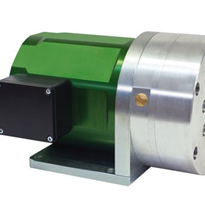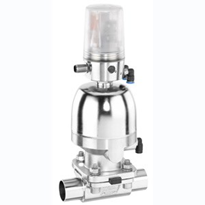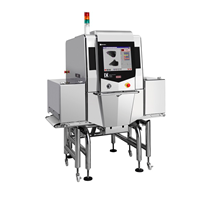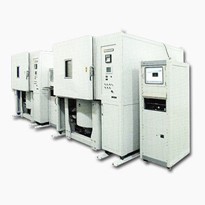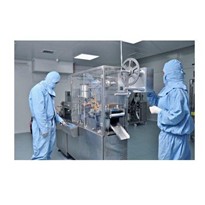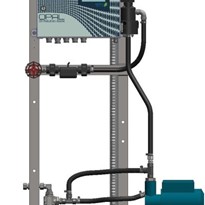National Starch and Chemical (NSC) - which is now part of the 10,000-employee Corn Products International Group - decided before it commenced production at its Kalasin cassava processing plant in 1994 to equip it with the most advanced waste water recycling and green energy technology available.
"Today we meet two-thirds of our energy needs for our boilers and drying from biogas," Banjerd Tawinkarn, safety, health and environmental (SHE) manager at NSC said.
Tawinkarn has seen crude oil prices surge from under $15 a barrel back when the plant opened to peaks over $100 now, making fossil fuels such as bunker oil vastly more expensive.
In addition to producing 19,000 m3 a day of 65 per cent methane biogas – saving the equivalent of 12,000 kg a day of fossil fuel oil – the waste water treatment plant supplied by Global Water Engineering produces high purity recyclable water for use in production processes and for irrigation of nearly 500,000 sq m of eucalypt plantation established to enhance the plant's environmental credentials. The GWE technologies involved are represented in Australasia by CST Wastewater Solutions.
"We are proud of the plant, which is efficient and easy to operate.
"Seventeen years ago, nobody cared much about biogas, but we did it for the environment. Our water quality, too, is high because of the technology we installed."
The Kalasin plant, which typically processes 200 tons of cassava a day, uses GWE's aerobic and anaerobic waste water and green energy technologies to treat up to 4000 m3 a day of wastewater with 48,000 kg/d COD (Chemical Oxygen Demand (COD) pollution level).
The process involves pre-existing pre-settling tanks and equalisation lagoon, pH adjustment with lime, lime mixing tanks, grit trap, pumping station, ANUBIX- B UASB type methane reactor of 4,800 m3 capacity, biogas flare and burner, aeration basin of 4,200 m3 with jet aeration system and final clarifier.
Influent containing 15,000 mg/l COD is processed to produce anaerobic and aerobic effluent levels of 1400/150mg/l COD respectively – equivalent to removal of 90-99 per cent of pollutants.
GWE CEO Jean Pierre Ombregt says such performance is excellent by current world standards, well ahead of its contemporaries, and a credit to the foresight of National Starch management and staff whose thinking was years ahead of their time.
"The huge additional benefit is that their green energy initiative has helped to future-proof their operations against the oil price shocks that will inevitably come," Ombregt said.
"We have already seen, in recent history, how devastating these can be. And it is certain that, when some of the current economic and political clouds move away, we will see oil and fossil fuels on a relentless march upwards."
Ombregt's company has completed more than 300 water and waste water projects in more than 60 countries including Asia, Africa, North and South America, Australia, China, Europe (including Eastern Europe) and Russia.
GWE has successfully built and commissioned more than 75 biogas utilisation systems for clients worldwide. National Starch was one of the early ones, and remains as an outstanding success.
GWE systems are designed to be either owner-operated, or they can be built, owned and operated on a company's behalf, with GWE staff globally providing ongoing support and performance optimisation - including the addition of new technology such as the company's GWE's RAPTOR treatment system for solid organic residues.
RAPTOR technology – Rapid Transformation of Organic Residues – is a powerful liquid-state anaerobic digestion process that consists of enhanced pre-treatment followed by multi-step biological fermentation to optimise conversion of almost any organic residue or energy crop into biogas, valuable electricity or heat.
"One of the beauties of technologies such as the installation at National Starch and at other food and beverage companies is that they are designed to be easy to operate, easy to service and easy to enhance," Ombregt said.
Banjerd Tawinkarn says that National Starch has adapted its installation to progressively reduce the overall amount of oil it requires.
For the first 10 years of operation, oil was mixed with biogas. The amount was progressively reduced as the company moved toward 100 per cent gas. The gas is now supplemented with LPG for drying processes, giving a cleaner environmental footprint.
Of the treated water produced, about 20 per cent is returned to production process (boilers) and the remaining 80 per cent to irrigation of the Eucalyptus plantation.
The overall outcome of National Starch's use of waste water technology, says Jean Pierre Ombregt, is a company that not only benefits the environment, but which also benefits its own bottom line.
"Once technology like this is installed, it very quickly pays for itself. Payback cycles become even shorter as oil prices rise and shorter still as governments factor carbon costs into their policies and pass on the price - or benefit - to industry.
"For industry these days, it really makes sense to be an educated environmentalist."






